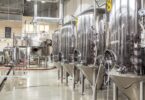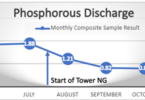
Author: Katrina Donaghy, CEO Civic Ledger
As we embark upon World Rivers Day 2021, there is much to reflect upon. The 2021 UN World Water Development Report, Valuing Water, tells us that the world will face a 40% water deficit by 2030 under a business-as-usual scenario.
By 2050, we will need 60% more food, and irrigated food production will increase by 50% over the same period. Yet, the water necessary for this development is not available, and the amount of water withdrawn by agriculture can only increase by 10% before hard limits are hit.
What this means is that we are facing a future of food insecurity, brought about by water scarcity. We live on a planet where only 3% of the earth’s water is fresh water, and of that, two thirds are locked up in glaciers, polar caps, or in deep aquifers. The world is being fed, and the natural world sustained, by only 0.5% of the earth’s water.
That 0.5% – mostly flowing in rivers and fresh-water lakes – is the backbone of life as we know it. It is estimated to be about 2,120 km2, and our reliance on it to feed a growing world population makes us highly vulnerable. Agriculture accounts of 69% of global water withdrawals, mostly used for irrigation, but also livestock and aquaculture. In some developing countries, this ratio is 95%.
Without food security, brought about by water security, the world would know no peace, prosperity, or wealth. It has become increasingly evident that fresh water, embodied in our rivers and fresh-water lakes, is a critical resource that must be preserved and conserved at all costs.
Yet how do we do that whilst ensuring a consistent supply of quality food? There will be technological solutions for more efficient food production such as vertical gardens built into cities and hydroponics using recycled water. But there will still be a reliance on rivers for irrigation, especially in developing countries and for broad acre farming and livestock.
One solution we are working on at Civic Ledger is Water Ledger. The purpose of water ledger is to make water markets transparent and secure, so that water rights holders are incentivised to trade water at the same time as ensuring it goes to its highest value use.
Water trading in Australia is governed by 15,000 business rules, over 350 water products, takes on average 63 days to settle and covers 5 separate water registries. The result is that at least 40% of irrigators do not think the water markets are fair, and at least a third believe that water trading isn’t easy. According to the Victorian Farmers Federation 2016 Submission to DELWP, “Farmers want transparent open markets that allow them to plan the best use of their water resources and capital.”
When the average person can’t discover the price of water on any given day, it’s impossible for water to be appropriately valued
Our position, backed up by our research and pilots, is that you will never have water market efficiency, and thus conservation, as long as markets are opaque and information on trading and volume data is siloed. When the average person can’t discover the price of water on any given day, it’s impossible for water to be appropriately valued, or its scarcity acknowledged, in economic modelling. Small traders are at the mercy of big conglomerates, leading to the view that water markets are manipulated, and corrupt.
During 2019-2020, Civic Ledger conducted the world’s first pilot for trading temporary water allocations on the blockchain in partnership with the CRC for Developing Northern Australia (CRCNA) and FNQ Growers in the Mareeba-Dimbulah Water Supply Scheme (MDWSS).
MDWSS is in Far North Queensland, Australia. Water from Tinaroo Falls Dam is distributed by gravity to farms, dwellings and townships through 176km of main channel and a further 189km of subsidiary channels. There are five balancing storages to supply 1000 water users growing diverse crops including sugar cane, mangoes, bananas, pawpaw, citrus and avocados.
Stakeholder feedback from the pilot highlighted that the most important water information includes authority, ownership, price, market volume and trade history.
Jed Matz, the then CRCNA CEO, said of the pilot: “What we’ve heard, talking to the producers up there, is if they had more water available to them, they would expand their operations, or value add. That’s the anecdotal evidence, now we can try and put some numbers behind it with this research… The price will also be more transparent, it will be interesting how that impacts the system as well.”
The key concept here is value adding. Water markets have emerged as the preferred option for sharing scarce water resources between competing uses and users. But current mechanisms for trading water are highly complicated which has led to a breakdown of trust, and market distortions such as information asymmetry, opacity, and high transaction costs. Therefore, water rights holders stay out of water markets, or risk selling their entitlements to large players who have an unfair advantage over the market – the power of knowledge.
For water markets to operate efficiently and provide fair opportunities to participate, users need access to reliable and transparent market information in real time. As with all markets, when traders are on an equal playing field, this can help allocate and coordinate scarce resources to their most productive uses.
Water Ledger simplifies and automates the management of water by using blockchain and smart contracts to automate business and operating rules. The blockchain is a shared point of truth that is secure and transparent, with smart contracts that automate and enforce business rules to ensure regulatory compliance. Using this approach speeds up processes, reduces cost, increases trust, and maximises data security.
Blockchain supports water markets with its ability to provide a verifiable record of exchange and ownership at any given time
During the pilot with CRCNA, Water Ledger reduced trade times down from months to mere days – the days were what it took to get trade approval from the market operator, the actual trades on the blockchain took only seconds.
Blockchain is an emerging way for industries and government to make and verify transactions, streamlining processes, reducing the potential for error and fraud. In the environmental context, blockchain supports water markets with its ability to provide a verifiable record of exchange and ownership at any given time.
At Civic Ledger, we are banking on markets of tomorrow that are underpinned by immutable and automatic blockchain technology. Gone are the days of Excel spreadsheets and hierarchical water trading schemes, which are inherently insecure and manipulable. For water conservation, and thus river conservation, to be successful the world of environmental markets and blockchain must come together, to ensure a global appreciation of water backed by transparency, liquidity, and trust.
For more information, or to book a demo visit www.civicledger.com
Do you have an article that you would like to share? Submit your article here or keep up with the latest news from the water industry and wastewater industry by subscribing to our weekly newsletter.








[…] Water Ledger provides the basis for automated, open issuance and trading of digitized water rights, whether that be through auction, sale, lease, options, or sharing. […]